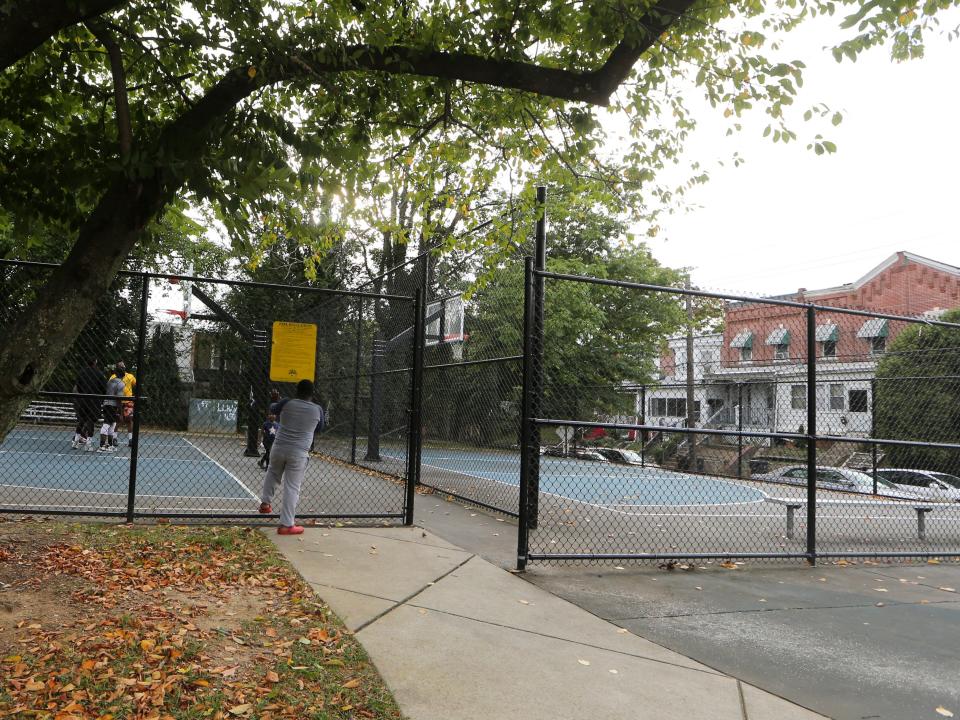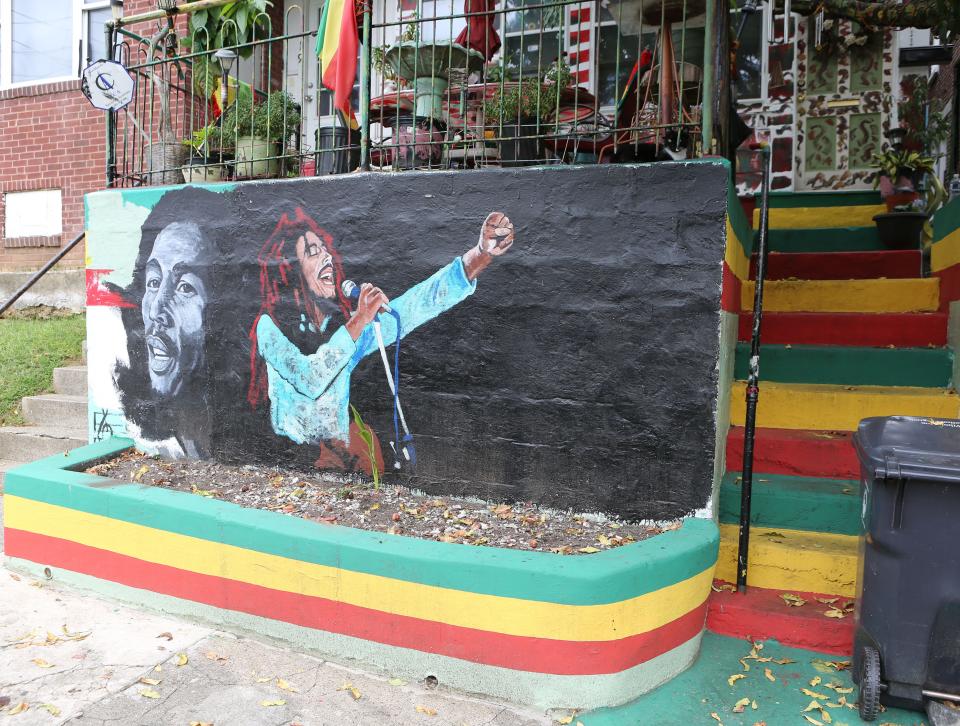How this Wilmington rowhome made reggae legend Bob Marley a Delaware local
Details are often omitted when a story is recounted. In Bob Marley's biography, a frequently overlooked detail in the legendary reggae musician's story is his life in Wilmington, although clearly marked signs provide this information. One such fact is where the music legend resided in the state's largest city.
When attention is given to his Wilmington residence, it often mistakenly focuses on a vibrant, mural-covered house. Although a Marley family member resides there, it is not where Bob Marley himself lived. In reality, his actual home is far more understated, blending in with the rest of the neighborhood.
In 1963, when an 18-year-old Marley stepped foot in Wilmington for the first time, he was not yet the global icon he would later become. Over the next 15 years following his first arrival, Marley would make periodic trips and eventually own a home in the city's ninth ward area.
The unassuming Wilmington rowhome provided a sanctuary where Marley could grow both personally and professionally, a transformation that resonated in the singer's music and Wilmington’s appreciation for his legacy.
From visitor to Wilmington homeowner
Marley's move to Wilmington began with his mother’s relocation.
After his father died in 1955, Marley's mother, Cedella Booker, came to Wilmington to visit her sister. She met and later married Edward Booker and relocated to Wilmington.

During this period in Delaware, Marley's family grew as his music career flourished. After marrying Rita Marley in 1966, the couple, along with their children Cedella and Ziggy, resided in Wilmington. Their son Stephen was born there in 1972. The 1625 square foot home at 2311 Tatnall Street the Marley family lived in deepened the ties they had with Wilmington's community, a connection documented in public records.
County archives show that on June 21, 1974, a deed signed by Edward R. Booker and Cedella E. Booker transferred the ownership of 2311 Tatnall St. to Robert Nesta Marley.
In a 1977 interview with The News Journal, Cedella Booker shared that Marley held several jobs while in Delaware. These included a stint as a lab assistant at DuPont and later as a line worker and forklift driver at Chrysler. These experiences influenced Marley’s development as an artist. Some even found their way into his music, as reflected in the lyrics of his 1976 song “Night Shift,” where he sings, “Working on a forklift/In the night shift.” Marley had these experiences just before the 1973 release of “Catch a Fire” the album that launched him into international stardom.
Though Marley left Delaware to focus on his music career, he continued to visit until 1977, when his mother moved to Miami, closing the Delaware chapter of his life. Marley went on to become a global music sensation selling 75 million albums.
HOMECOMING: Stephen Marley, son of reggae legend Bob Marley, comes home to Wilmington
As Wilmington continues to embrace its special place in the music icon's history, the city has made efforts to preserve his legacy. Before 2014, the park at 24th and Tatnall streets was a simple urban green space with benches, playground equipment and a basketball court enclosed by a chain-link fence.
Today, Tatnall Street Playground has been transformed to commemorate the city's genuine connection to the legendary reggae icon. Now known as Tatnall Street Playground/One Love Park, a Delaware Public Archive marker is embedded in the ground, paying tribute to the rich history of the modest residency, of the music star and former home of the Marley family.
Earlier this year a key to the city was presented to Marley’s son Stephen to honor the Marley family’s impact on both the local community and the world stage.
The Peoples Festival offers an immersive Marley experience
The city's connection to Marley now goes beyond his residence. The 2024 Peoples Festival, taking place this Saturday, began as a local tribute to Bob Marley and has evolved into a major cultural event, drawing attendees and performers from all over the globe.

The festival, which will be held at Tubman-Garrett Park in Wilmington, not only celebrates Marley’s musical contributions but also serves as a platform for emerging artists and a gathering place for fans from all walks of life. It runs from 2 to 10 p.m. and will feature a diverse lineup of entertainers spanning reggae, world beat and rock genres.
Headlining the event is legendary dancehall singer and DJ Sister Nancy, fresh from her appearance at the Tribeca Film Festival for "Bam Bam: The Sister Nancy Story" (2024).
Other notable performers include Junior Toots, son of Toots Hibbert from Toots and The Maytals, and Reemah, a roots reggae artist from Saint Croix. The festival will also showcase Indigenous hip-hop star Supaman and Josh David Barrett, former lead singer of The Wailers.
Local talent will be featured on the Uprising Stage, ensuring nonstop live music throughout the event.
As the Peoples Festival enters its third decade, it stands as a testament to Bob Marley’s enduring influence. From his early days on Tatnall Street to the global impact of his music, Marley’s connection to Wilmington remains a source of pride and inspiration for the community.
You can contact Anitra Johnson at [email protected].
This article originally appeared on Delaware News Journal: Reggae legend Bob Marley's home in Wilmington Delaware
